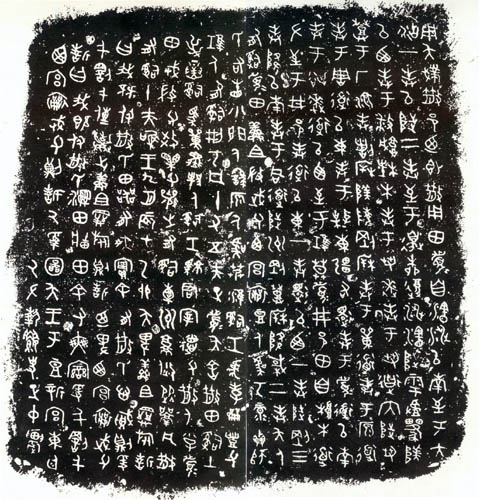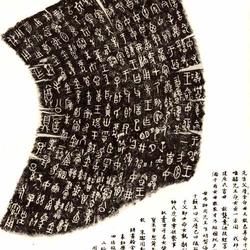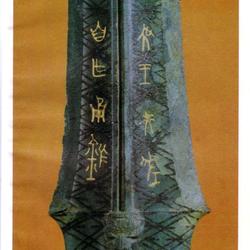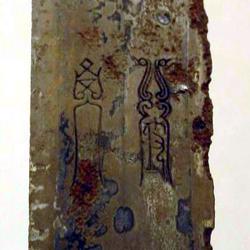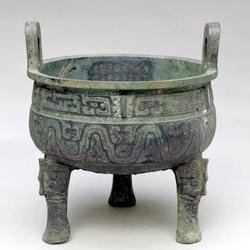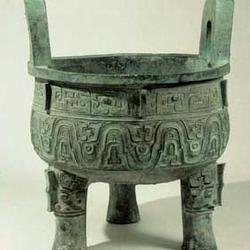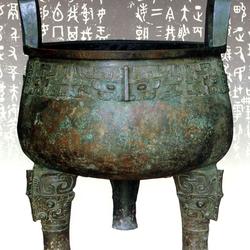Known as the "Four National Treasures of the Late Qing Dynasty", the bronze cultural relics of the Western Zhou Dynasty - the Great Men's Tripod, the Mao Gong Tripod, the Guo Jizi White Plate and the Sanshi Plate - once caused a sensation. This Sanshi plate is named after the word "Sanshi" in the inscription. Some people think that the author of the instrument is Kui, also known as Kui Renpan. It is said that it was unearthed in Fengxiang, Shaanxi in the early years of Qianlong's reign in the Qing Dynasty. Height 20.6 cm, diameter 54.6 cm. Round shape, shallow belly, double attached ears, high circle feet. The abdomen is decorated with Kui patterns, and the circle feet are decorated with animal mask patterns. There are 19 lines of inscriptions and 357 words on the inner bottom. The content is a land transfer contract, describing the land paid by the Ku people to the San family, detailing the four directions of the land and sealing the boundaries, and finally recording the process of holding an oath of alliance. It is an important historical material for studying the land system of the Western Zhou Dynasty. During the reign of Emperor Kangxi of the Qing Dynasty, Xu Yueqi of Yangzhou paid a lot of money to buy it from the Cheng family of Shezhou, and later it belonged to the Hong family of Yangzhou. Ruan Yuan of the Qing Dynasty had this plate recast, and there are also rubbings of inscriptions handed down to the world. In the 14th year of Jiaqing, when Renzong was on his 50th birthday, the new governor of Liangjiang, A Yubao, purchased this tribute from a Yangzhou salt merchant and brought it to the imperial palace. It passed through the four dynasties of Dao, Xian, Guang and Xuan. Due to the lack of investigation for a long time, its location was unknown. In 1924, during the inspection by the Internal Affairs Office of the Xunqing Dynasty, it was found in the warehouse of Yangxin Hall. In 1935, "Sanshi Pan" was transferred to the National Palace Museum in Peking along with other cultural relics of the Qing Dynasty. It was moved south during the Anti-Japanese War and is now stored in the National Palace Museum in Taipei.
The structure of Sanshi Pan's inscriptions is very ancient, with rounded and concise lines, cursory writing and flat characters, and a sideways posture. Because it is in a horizontal position and the center of gravity is low, it appears more simple and thick. It has a strong sense of "casting" and expresses a strong "gold flavor", so it occupies an important position in the system of stele studies. Hu Xiaoshi, a famous modern calligrapher, commented: "The seal script has been greatly prepared since the Zhou Dynasty, and its large instruments are such as the Yu Ding, Maogong Ding, ... the characters are knotted and vertical, and the only horizontal one is the Sanshi Pan. "
